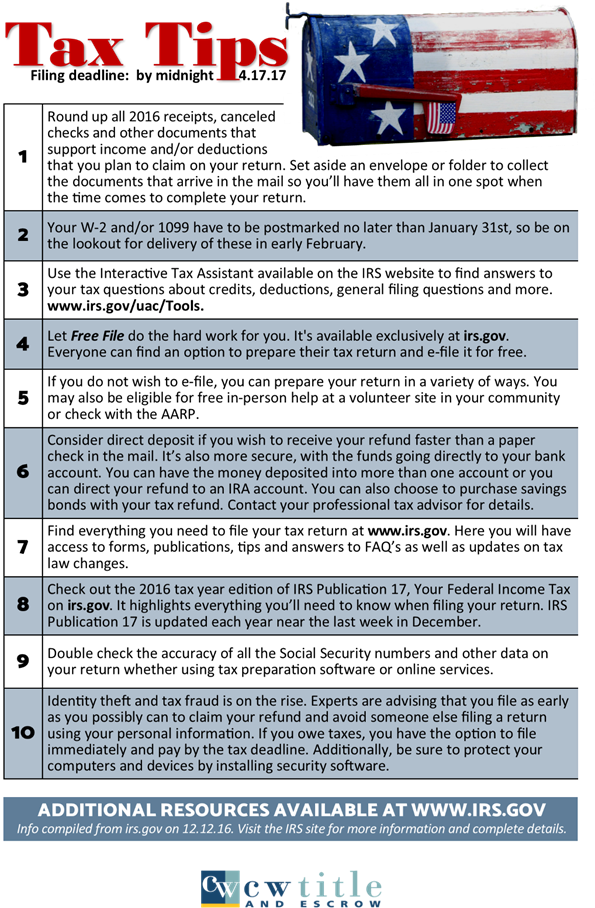Four Reasons Why Dodd-Frank Will Not Be Repealed
Many worry about President Trump’s pledge to remove regulations relating to financial services and the rollback of the ‘Dodd-Frank Wall Street Reform and Consumer Protection Act’. For those who may be unware of this very substantial bill, it represented the most comprehensive financial regulatory reform measures taken since the Great Depression, and was a result of the financial crisis and housing crash of 2008/2009.
In effect, the Dodd-Frank Act created an agency to enforce compliance with consumer financial laws, introduced more stringent regulatory capital requirements, and made banking institutions retain some risk associated with home mortgage issuance.
While I believe that it’s safe to suggest that certain aspects of Dodd-Frank will be rolled back, there are four reasons why I don’t think the entire Act will be repealed.
1. Legislative action is needed to overturn any laws, and this includes Dodd-Frank. There is a very rigorous process to do this, and unsurprisingly, no consensus amongst lawmakers. Given these headwinds, and the fact that it took nearly 10 years to implement the rules that are contained within the Dodd-Frank Act, it will likely take the same length of time to roll it back.
2. A presidential executive order repealing Dodd-Frank would trigger a judicial review. An important point to understand here is that executive orders can be nullified upon judicial review if they are deemed unconstitutional or if they are not supported by statute (think of what we’re currently seeing with President Trump’s immigration ban). The courts could deem that legislative action is required if a major policy initiative is the subject of the executive order, and a reform as sweeping as Dodd-Frank is likely to be deemed a major initiative. If so, then it is back to Congress to do the legislative work, which as we all know, is never a quick process.
3. The legislative branch probably doesn’t have a strong desire to tackle another major rules overhaul concurrent with the Affordable Care Act (ACA). Given the focused public spotlight on health care, legislators may run short on bandwidth to address a second statute as massive as Dodd-Frank.
4. If financial markets continue to rise (think: Dow Jones 20,000), the focus on financial services deregulation will probably lessen. Wall Street is currently outperforming even the most bullish analysts’ predictions and bank stocks are surging in value against higher earnings and profits. As such, voices within the financial services arena that are crying out for deregulation may have less influence on Congress, and certainly less credibility with the American public.
From a housing perspective, Dodd-Frank addressed the high-risk lending practices that were once endemic amongst banks. Any changes to the Act are highly unlikely to allow Wall Street to go back in that direction. Rather, the moves will take place more around the edges, such as cutting compliance costs, freeing up community and regional banks from the same rules as their bulge-bracket peers, and helping out investment advisors who believe they’ve been targeted unfairly.
For some, any repeal of Dodd-Frank implies a return to the irresponsible lending practices of years past, but the chances of that are close to zero. We may see a modest drop in credit score requirements when it comes to applying for a mortgage, but all that will do is add more potential buyers into an already competitive housing market. As for a resurgence of sub-prime lending? I am confident that will not happen.
Matthew Gardner is the Chief Economist for Windermere Real Estate, specializing in residential market analysis, commercial/industrial market analysis, financial analysis, and land use and regional economics. He is the former Principal of Gardner Economics, and has over 25 years of professional experience both in the U.S. and U.K.
Windermere Foundation 2016 Year in Review

|
|||
|
Western Washington Gardner Report | Fourth Quarter 2016

|
|||||||||||||||||||
|
|||||||||||||||||||
|
|||||||||||||||||||
|
First Time Buyers, Millennials, and What to Expect in 2017

First Time Buyers, Millennials, and What to Expect in 2017

By Matthew Gardner, Chief Economist at Windermere Real Estate
I believe that the big story for the coming year will be first-time home buyers. Since they don’t need to sell before purchasing, their reemergence into the market ensures that sales will continue to increase, even while inventory is limited. Thirty-one percent of buyers currently in the real estate market are first-time buyers, but it would be more ideal if that figure was closer to 40 percent.
Why don’t we have enough first-time buyers in the market? With Baby Boomers working and living longer, we aren’t making much room for Millennials to start their careers. Plus, the major debt that the younger generation owes on student loans ($1.3 trillion today) hugely impacts the housing market. But the bigger issue is lack of down payments. Before the recession, many Millennials could look to their parents for help with down payments; however, these days that is not as much the case.
I would also contend that the notion of Millennials being a “renter generation” is nonsense. In a National Association of Realtors survey, 75 percent of them said that buying a home would be the most astute financial decision they’d ever make; however, 80 percent said they don’t think they could qualify for a mortgage. I do believe that Millennials will eventually buy, but they’re delaying their purchasing decisions by about three years when compared to previous generations, which is about the same amount of time they’re waiting to start families as well.
Mortgage rates have risen rapidly since the election, and unfortunately, I do not see a turnaround in this trend. That said, they will remain cheap when compared to historic averages. Expect to see the yield on 30-year mortgages rise to around 4.7% by the end of 2017. For those who have grown accustomed to interest rates being at historic lows, this might seem high, but it’s all relative.
If I were to gaze all the way into 2018, my crystal ball takes me to the dreaded “R” word. Like taxes and death, recessions are another one of those unwanted realities that inevitably comes to visit every so often. Irrespective of who was voted into the White House, my view remains the same: prepare to see a business cycle recession by the end of 2018, but, rest assured, it will not be driven by real estate, nor will it resemble the Great Recession in any way.
Windermere and the Seattle Seahawks Raise $35,000 for YouthCare
What’s better than watching the Seattle Seahawks win another game? Knowing that for each home game tackle they made this season, Windermere would donate $100 to YouthCare to help #tacklehomelessness. Thanks to the Seahawks stellar season, we raised a grand total of $35,000 which will fund critical services for homeless youth. #GoHawks #Tacklehomelessness
What’s in Store for the 2017 Seattle Housing Market?
What’s In Store For The 2017 Seattle Housing Market?

By Matthew Gardner, Chief Economist, Windermere Real Estate
2016 was another stellar year for the Seattle housing market, in which a surplus of buyers and a deficit of sellers drove home prices higher across the board. So, can we expect to see more of the same in 2017? Here are some of my thoughts on the Seattle/King County housing market for the coming year:
- Our market has benefited greatly from very healthy job growth, driven in no small part by our thriving technology companies. Economic vitality is the backbone of housing demand, so we should continue to see healthy employment growth in 2017; however, not quite as robust as 2016. Migration to Seattle from other states will also continue in the coming year, putting further pressure on our housing market.
- Are we building too many apartments? The answer to this question is “maybe”. I believe we are fast approaching oversupply of apartments; however, this glut will only be seen in select sub-markets, such as South Lake Union and Capitol Hill. Developers have been adding apartments downtown at frantic rates with many projects garnering very impressive rents. In the coming year, look for rental rate growth to slow and for concessions to come back into play as we add several thousand more apartments to downtown Seattle.
- The Millennials are here! And they are ready to buy. 2016 saw a significant increase in the number of Millennial buyers in Seattle, and I expect to see even more in 2017. The only problem will be whether Millennials will be able to find – or afford – anything to buy.
- Home prices will continue to rise. But price growth will taper somewhat. The market has been on a tear since bottoming out in 2012, with median home prices up by a remarkable 79% from the 2012 low, and 14% above the pre-recession peak seen in 2007. Given the fact that interest rates are now likely to rise at a faster rate than previously forecasted, I believe price appreciation will slow somewhat, but values will still increase at rates that are well above the national average. Look for home prices to increase by an average of 7.5 – 8.5% in 2017.
- More homes for sale? I am optimistic that inventory levels around Seattle will increase, but it still won’t be enough to meet continued high demand.
- This is my biggest concern for the Seattle housing market. Home prices – specifically in areas with ready access to our job centers – are pulling way ahead of incomes, placing them out of reach for much of our population. This forces many buyers to move farther away from our job centers, putting additional stress on our limited infrastructure. We need to have an open discussion regarding zoning, as well as whether our state’s Growth Management Act is helping or hindering matters.
- New Home Starts/Sales. As much as I would love to say that we can expect a substantial increase in new homes in 2017, I am afraid this is not the case. Historically high land prices, combined with ever increasing construction and labor costs, slow housing development, as the price of the end product is increasingly expensive. This applies to single family development as well as condominiums. We should see a couple of towers break ground in 2017, but that’s about all. Vertical construction is still prohibitively expensive and developers are concerned that there will not be sufficient demand for such an expensive end product.
- Are we setting ourselves up for another housing crash? The simple answer to this question is no. While home price appreciation remains above the long-term average, and will continue to be so in 2017, credit requirements, down payments, and a growing economy will all act as protectors from a housing crash in Seattle.
 Facebook
Facebook
 X
X
 Pinterest
Pinterest
 Copy Link
Copy Link



 Thanks to our agents, offices, and everyone who supports the Windermere Foundation, we are able to continue to make a difference in the lives of many families in our local communities. And not just during the holidays, but throughout the year. If you’d like to help support programs in your community, please click on the Donate button.
Thanks to our agents, offices, and everyone who supports the Windermere Foundation, we are able to continue to make a difference in the lives of many families in our local communities. And not just during the holidays, but throughout the year. If you’d like to help support programs in your community, please click on the Donate button.








